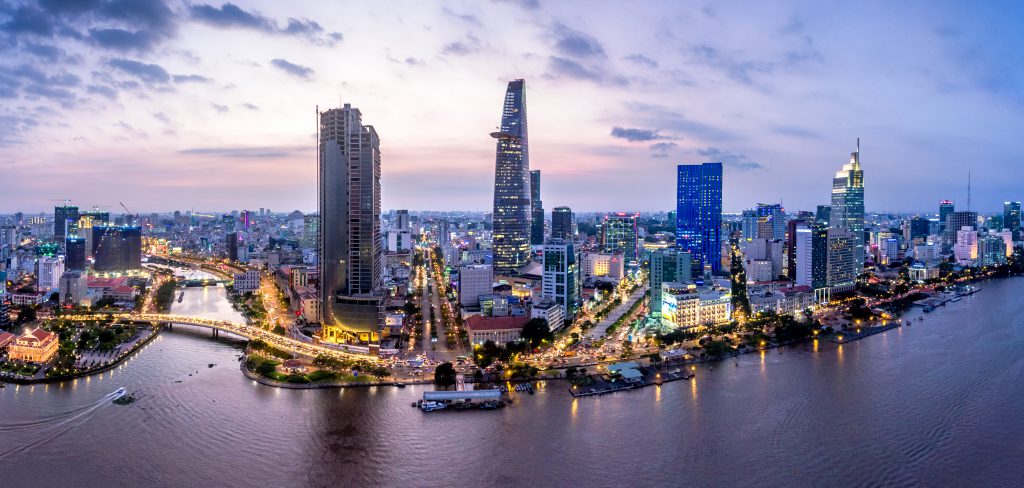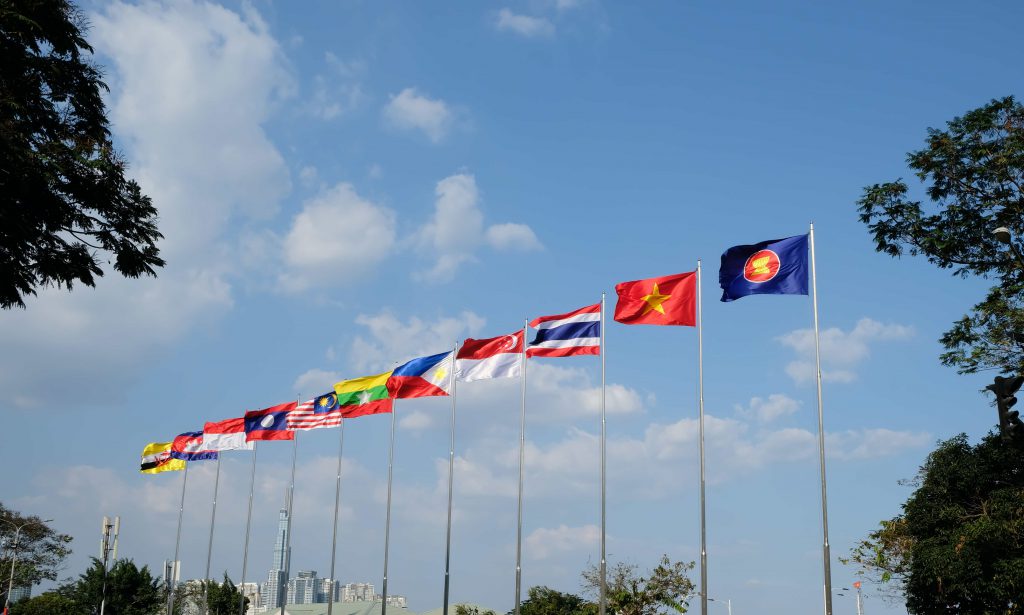Forbes – Vietnam obtained a GDP growth rate of 7.02% in 2019, among highest in the world. This is also the second year that Vietnam’s economic growth rate was above 7%. The processing and manufacturing industry grew 8.9% and continued to be as a main driving force for the country’s economic growth. In terms of trade, Vietnam’s exports earned 500 billion USD in this year and enjoyed the export surplus for the 4 consecutive years in the context of the downward trends of decreased trade in many countries.
Global Competitiveness Index of 2019 revealed that Vietnam Jumped 10 places from the last year to 67, making it as the most improved country of 2019. This is supported by her government which focuses on creating a favorable, open business environment and stepping up the economic restructuring.
According to the World Bank, Vietnam has made much progress in improving business environment over the past decade. The World Bank’s 2020 Doing Business report ranked Vietnam at 70th out of 190 economies. This rank is relatively good compared to the past as Vietnam was over 90th position in 2010, and in comparison, to economies with similar per capita income.
The World Bank is also positive that Vietnam will continue to make much progress in 2020 and for years to come. This assessment is based on two main reasons as follows: Firstly, Vietnamese authorities have worked on improved access to credit information through data distribution from retailers. This will help reduce service costs and increase transparency in the market.
In October 2019, the National Credit Information Centre of Vietnam (CIC) and the State Bank of Vietnam (SBV) launched a portal connecting borrowers and credit institutions. Borrowers now can easily choose credit packages and register loan needs at the appreciate credit institutions through the online portal.

As for borrowers, they can view their own credit information and credit scores by themselves and monitor their credit levels as well as prevent fraud. Secondly, it’s about paying taxes. In 2019, Vietnam upgraded the electronic system managing the tax payment process for businesses.
Upgrading the information technology infrastructure has made paying taxes an easier process for most businesses. The tax payment processes now can be completed within a day, compared with two to three working days in the past few years. The improved business environment has also helped Vietnam attract more foreign investment. Foreign Direct Investment (FDI) has been pledged to Vietnam surpassing 38 billion USD in the year of 2019. This figure is a 10-year high and represents a year-on-year of 7.2%.
Vietnam has signed 12 free trade agreements with external partners so far, including “new-generation” deals with higher and broader commitments. Impressively, the European Union signed a landmark free trade agreement with Vietnam in June, 2019, the first of its kind with a developing country in Asia, paving the way for tariff reductions on 99% of good between Vietnam and this bloc. As mentioned by Reuters, the European Union described the EU-Vietnam Free Trade Agreement (EVFTA) as “the most ambitious free trade deal ever concluded with a developing country”.
The EU is Vietnam’s second-largest export market after the United State. According to the Vietnamese Government, EVFTA would boost EU exports to Vietnam by 15.28% and those from Vietnam to the EU by 20% by 2020. The agreement will boost Vietnam’GDP by 2.18%-3.25% annually by 2023 and 4.57%-5.30% annually between 2024 and 2028. On February 12th, 2020, the European Parliament ratified EVFTA and also the EU-Vietnam Investment Protection Agreement (EVIPA). At the end of 2018, EU investors had invested more than 23,9 billion USD in 2,133 projects in Vietnam. Now, Investors from this Bloc are active in 18 economic sectors and in 52 out of 63 provinces in Vietnam. Among 24 EU member states having investing in Vietnam, Netherlands is taking the top followed by France and the UK.
To remember, Vietnam is also a member of the Comprehensive and Progressive Agreement for Trans-Pacific Partnership (CPTPP). According to the National Center for Socio-Economic Information and Forecasting under the Ministry of Planning and Investment of Vietnam, the CPTPP would boost Vietnam’GDP by US$ 1.7 billion USD and exports more than $4 billion by 2035, up 1.32% and 4.04 % respectively. The Agreement will create a huge free economic sector, with a market size of about 500 million people and a combined GDP of more than US$13.5 trillion that accounts for 13% of global GDP.
Vietnam has also significant achievements in terms of how the country dealt with the coronavirus outbreak. Recently, London-based famous, Financial Times said that “Vietnam has proved a model in containing the disease in a country with limited resources but determined leadership”.
Vietnam has focused on isolating infected people and tracking down their second and third contacts rather than applying the South Korea-style response to the outbreak, which carries mass testing. All of those people were then placed under successively stringent levels of movement and contact restrictions.
Vietnam shares a 1,100-kilometer-long border with China, however, the country has reported only 270 infected people and no death as of April 25. Many of those returned from overseas. During a meeting of the Communist Party of Vietnam at the end of January, the Vietnamese Prime Minister Nguyen Xuan Phuc said that “fighting this epidemic, means fighting the enemy”.

Indeed, Vietnam actively prepared to deal with the virus outbreak before it registered the first case. The Ministry of Health issued urgent dispatches on outbreak prevention to relevant government agencies on January 16 and to hospitals and clinics nationwide on January 21. Vietnam recorded the first case on January 23 in Ho Chi Minh City. Besides fighting the epidemic domestically, Vietnam has donated test kits and masks to many countries, including Laos and Cambodia, its close neighboring countries, and United States, United Kingdom, and Spain are its comprehensive and strategic partners. Vietnam is chair of the Association of Southeast Asian Nations (ASEAN) for 2020 and a nonpermanent member of the United Nations Security Council (UNSC) for 2020-2021 terms. Succeeding in containing the COVID-19 pandemic domestically allows Vietnam to have more room to play its role in the regional and international diplomatic forums.
Last year, winning 192 out of 193 votes, Vietnam was officially elected as a non-permanent member of the UN Security Council for the 2020-2021 terms. This is the second time that the country has held this post, demonstrating its wish to contribute to world security and peace and proving Vietnam is a responsible member of the UN. Vietnam also takes on Chair of ASEAN 2020. Therefore, this country is holding the two responsibilities together for the first time. This will be an opportunity for Vietnam to take advantage of bilateral relations with other countries, creating new impetus for enhancing the role and position of the country.
This achievement highlighted Vietnam’s diplomatic efforts and its strong relationships with other nations around the world. Leaders of Party, State, Government and National Assembly made 17 official visits abroad and received 22 high-ranking delegations paying visits to Vietnam last year. To date, Vietnam has established a network of 30 strategic partners and comprehensive partners.
Moreover, also in 2019, Vietnam hosted the second summit between the Democratic People’s Republic of Korea and the US, a move highly praised by the international community.
The diplomatic prominence of Vietnam helps it defend the nation’s sovereignty and territorial integrity, both on land and at sea.
The South China Sea (called East Sea in Vietnam) is a living space and has room for growth of coastal countries, including Vietnam, and space for cooperation between countries in and outside the region. The South China Sea also holds vital global maritime routes in terms of both of goods and number of vessels.
China has launched a massive island seizure and rebuilding efforts throughout the South China Sea in recent years, transforming numerous reefs into artificial islands that can support military installations, all the while ignoring competing claims over the regions by Brunei, Malaysia, Vietnam, Philippines and Taiwan. Philippines filed the case against China at the Permanent Court of Arbitration (PCA) in The Hague, the Netherlands, in January 2013. On 12 July 2016, PCA ruled that there was no legal basis for China to claim historic rights to resources within the area which is so-called the nine-dash line. The nine-dash line is not regconized by the international community.
The Ministry of Foreign Affairs of Vietnam has declared Vietnam’ consistent policy that all international disputes, including those in the South China Sea, must be resolved by peaceful means as regulated in the Law of the Sea (UNCLOS 1982). This has been asserted strongly in Vietnam National Assembly’ resolution ratifying the UNCLOS in 1994.
Vietnam have concluded the demarcation of and fisheries cooperation in the Gulf of Tokin with China in 2000, maritime demarcation with Thailand in 1997 and continental Shelf demarcation with Indonesia in 2003, signed an agreement on joint oil and gas exploitation with Malaysia in 1992 and a treaty on historical waters with Cambodia in 1988. Vietnam is also stepping up negotiations to handle demarcation of the sea off the mouth of the Gulf of Tokin with China and the demarcation of the Exclusive Economic Zone (EEZ) with Indonesia.
Vietnam patiently and resolutely fought against infringing acts of the Vietnamese EEZ and continental shelf – as specified in according with UNCLOS’ terms-by peaceful measures, including sending diplomatic notes voicing its protests, circulating the notes at the UN, and repeatedly reaffirming that Vietnam reserves the right to make use of all peaceful measures in line with international law to protect the country’s legitimate rights and interests under UNCLOS.
Recently, Vietnam’s Ministry of Foreign Affairs’ spokeswoman Le Thi Thu Hang on April 9 said that Vietnam has protested China’s illegal claims over the South China Sea by submitting a diplomatic note to the UN. This move was taken amidst the backdrop of growing tensions over China’s sinking of Vietnamese fishermen’ boat with eight crew members on board on April 4 off the waters of Hoang Sa (Paracel) islands. Hang also stressed that Vietnam asserts its sovereignty over the Hoang Sa (Paracel) and Truong Sa (Spratly) archipelagos in the South China Sea in accordance with international law. In addition, the country affirms its sovereignty, sovereign rights and jurisdiction over the waters stipulated in the 1982 UNCLOS.
Vietnam is going to celebrate the Reunification Day by April 30 and the International Day by May 1. Reunification Day, from April 30, 1975, plays a very important role in long-term history of Vietnam as it terminates the Vietnam War and the indochina war. From April 23, Vietnam was among first nations in the world to reopen after more than 3 weeks following an outbreak of Covid-19. Vietnam has maintained the socio-economic stability during the past decades. This is a positive sign which helps its economy to sustain its growth momentum. The favorable business environment and free trade agreements are expected to help increase foreign investment capital in Vietnam in the coming future. International investors should think about investing in Vietnam when many other countries are now in the Covid-19 pandemic and risk of economic recession in the Western world.



